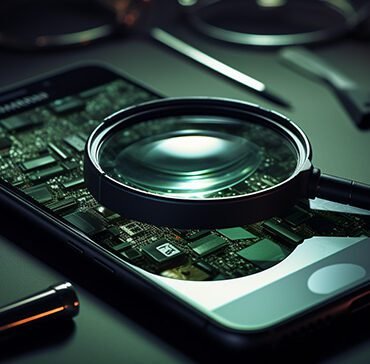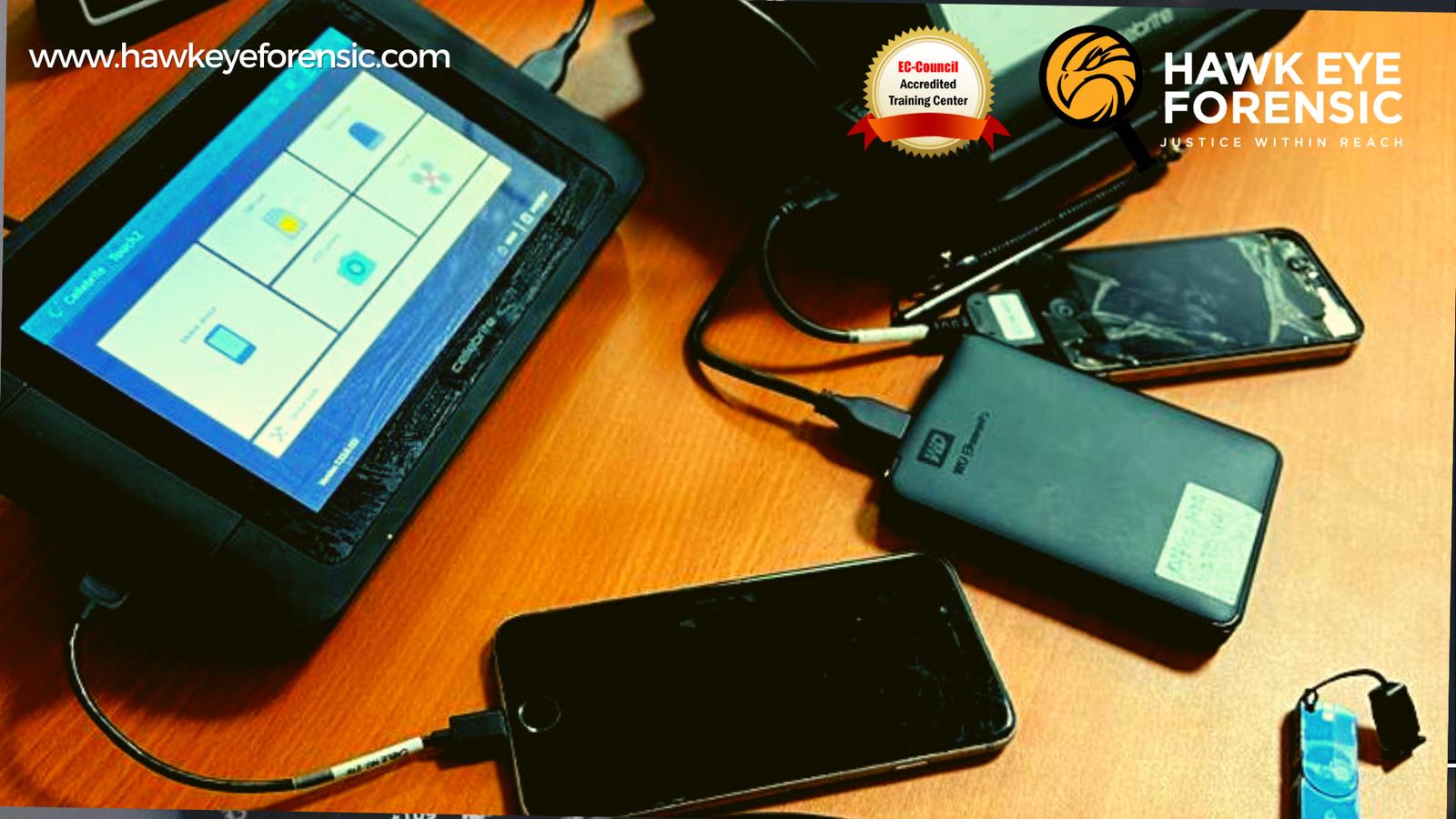
Mobile Forensics & Android Security
This blog will provide you with a quick review of mobile forensics and an in-depth analysis of the most important security aspects of Android security. Today’s digital age has produced ...


Mobile Forensic Anjali Singhal todayDecember 13, 2023

Examining a criminal’s phone can reveal a lot of information. For this reason, digital forensics in general and mobile forensics in particular are growing in value as tools for international law enforcement and intelligence services. Investigators can determine the reasons for the attack and its effects by looking into the malicious processes. Let’s investigate more closely.
The recovery of digital evidence from mobile devices through accepted means is known as mobile forensics. Unlike traditional digital forensics procedures, mobile forensics only concentrates on information recovery from mobile devices, like smartphones, tablets, and androids. Mobile devices are a valuable resource for law enforcement investigations because they hold a wealth of information, including location data, text messages, applications data and web search histories.
As mobile phones become a growing part into our daily lives, hackers find them to be an increasingly appealing target. As a result, the field of mobile forensics has emerged, focusing on the examination and interpretation of digital evidence discovered on portable electronic devices like tablets and smartphones.
Since the hardware, software, and security features of mobile devices are always changing, mobile forensics is a challenging and quickly developing field. Numerous situations, such as corporate investigations, civil lawsuits, and criminal investigations, can benefit from the application of mobile forensics.
A major obstacle in the field of mobile forensics is the enormous amount of data that can be kept on a single device. Numerous data types, including text messages, emails, pictures, videos, and location information, can be found on mobile devices. Because of this, mobile forensics needs specific instruments and methods to retrieve, examine, and comprehend this information.
Cyberstalking, theft, fraud, and child exploitation are just a few of the crimes that can be looked into with the help of mobile forensics. Mobile devices can frequently yield important evidence for criminal investigations, including potentially relevant texts or social media posts.
Mobile forensics can also be used in civil cases, like those involving theft of intellectual property or misbehavior by employees. Mobile forensics, for instance, may be used to retrieve sensitive data from a departing employee’s mobile device and utilize it to support legal proceedings against the individual.
Overall, mobile forensics is an essential tool for contemporary legal and law enforcement investigations. Mobile forensics will probably keep developing and growing to meet the needs of a world where mobile devices are becoming an ever-more-important part of our lives.
1. SEIZURE AND ISOLATION
Seizing and isolating the device is the initial step in mobile forensics, especially if you are the first to handle it. However, this process is more than just taking possession of the device. Being aware of and thoughtfully considering these aspects ensures that the device remains as accessible as possible.
Preserving Lock Status:
If the device is currently unlocked, it is advisable to make efforts to retain this state. Extracting data from an unlocked device is significantly simpler and more dependable than dealing with a locked one. Devices typically have a predetermined timeout period, governing when the display turns off and the device locks. It is essential to access the device and adjust the lock settings before the expiration of the timeout period.
Preserving Power State:
Encountering a device in either an active or an inactive state is possible, and it is advisable to maintain its current power status. Rebooting a device results in the loss of stored data in the memory and alterations to various system files. To prolong its active state, connecting the device to a charger may be necessary.
Disconnecting from the Internet:
Mobile phones continue to operate in the background even when the screen is locked. With an active internet connection, applications can further modify files on the device. In most cases, a straightforward command sent over the internet can result in the permanent erasure of data from the device—a situation one would prefer to avoid. The most common method to disconnect a device is to put it into airplane mode. Faraday bags and Phone jammers are another effective method to isolate and transport mobile devices to the laboratory.
2. EXTRACTION AND RECOVERY
The method of extracting and recovering mobile device data depends on the device and its state. Let us discuss some common data extraction & recovery scenarios.
Unlocked Device:
Data extraction and recovery become notably simpler and more reliable when dealing with an unlocked device. Leveraging the device’s operating system and applications allows for seamless viewing and exporting of data. Additionally, connecting the device to a computer enables the use of various tools to extract both current and deleted data. Specialized Mobile Forensic Tools like Cellebrite UFED, MSAB XRY, and Oxygen Forensic Detective excel in extracting and recovering data in a forensically sound manner, making them ideal for such scenarios.
Locked Device:
In the case of a locked device, the process involves either breaking the passcode or utilizing mobile forensic tools capable of bypassing the lock, providing access to the device’s data. The success of software in extracting data from a locked device depends on the specific device and its settings.
Powered-Off Device:
When a device is powered off, you can just turn it on and try to extract data. In many cases, however, the device might be damaged and cannot be powered on. In such cases, you might need to remove memory chips from the device and use specifically designed software and hardware tools to extract data. Please note that this is an invasive process and must be performed by trained professionals in a properly equipped digital forensics lab.
DATA EXTRACTION METHODS:
There are several types of mobile forensics methods that are based on the below-mentioned parameters:
Manual Extraction:
Description: Accessing apps and scrutinizing data directly on an unlocked device.
Method: Examining data through manual interaction with the device’s applications.
Logical Extraction:
Description: Transferring files from the targeted mobile device to another device for thorough examination.
Method: Copying and analyzing files from the device in a logical, systematic manner.
Hex Dumping / JTAG:
Description: Utilizing the debug interface of mobile devices to obtain raw data, which requires additional processing for usability.
Method: Extracting raw data through the Hex Dumping or JTAG process, followed by subsequent processing for meaningful information.
Chip-off:
Description: Connecting the memory chips of the targeted mobile device to specialized hardware to extract data.
Method: Extracting data by physically removing and attaching memory chips to dedicated hardware.
Micro Read:
Description: An intricate process involving the examination of memory chips using powerful microscopes. However, due to its complexity, this method is typically not a preferred option for data extraction.
Method: Conducting a highly technical examination of memory chips through powerful microscopes, but not commonly chosen for data extraction due to its complexity.
3. ANALYSIS
The analysis is the process of separating the relevant pieces of information from the jumble and deducing inferences. The analysis part of the mobile forensics process tries to answer the W questions: who, what, when, where, and why.
In an ideal situation with unlimited resources, you should be able to analyze all extracted data and find relevant evidence. With a large amount of data extracted from modern mobile devices, however, it is often not feasible to pay equal attention to every piece of information. Consequently, addressing the above questions serves as a guide to concentrate efforts on the most crucial aspects of the investigation.
CHALLENGES
One of the biggest forensic challenges when it comes to the mobile platform is the fact that data can be accessed, stored, and synchronized across numerous devices. Due to the volatile nature of the data, which can be rapidly altered or remotely deleted, more effort is required for the preservation of this data.
Law enforcement and forensic investigators frequently encounter challenges in acquiring digital evidence from mobile devices. The following are some of the reasons:
SUMMARY
Mobile forensics, a subset of digital forensics, possesses distinct characteristics such as the seizure and isolation of mobile devices, as well as the extraction, recovery, and subsequent analysis of the obtained data. Despite the substantial volume of data stored on modern mobile devices, making it challenging to determine the most pertinent information for an investigation, a focused approach can center on common data types like media, calls, messages, contacts, browsing history, and location data to identify key clues.
Mobile devices are one of the fastest evolving things today, which is also the field what mobile forensics covers the most. Though the technology used in mobile devices may evolve rapidly, the fundamental principles of mobile forensic investigations remain constant. The primary goal is to identify and gather relevant evidence in a format that uncover the truth, and ensuring its admissibility in a court of law.
We are at Hawk Eye Forensic, our mission is to offer comprehensive training and in-depth guidance in the field of Digital Forensics. Through our specialized programs, we provide professionals, law enforcement agencies, and individuals with the necessary tools and knowledge essential for navigating the complexities of digital investigations. Our training courses cover a wide array of topics, including the use of cutting-edge forensic tools, techniques for data extraction and analysis from various devices such as smartphones, computers, and other digital sources.
REFERENCES
1. GeeksforGeeks. (2022). Mobile Forensics – Definition, Uses, and Principles. [Online] Available at: https://www.geeksforgeeks.org/mobile-forensics-definition-uses-and-principles/.
2. Zbrog, M. (n.d.). Mobile & Digital Forensics: How Do Experts Extract Data from Phones? [Online] Forensics Colleges. Available at: https://www.forensicscolleges.com/blog/guide-to-mobile-forensics.
Written by: Anjali Singhal
Tagged as: mobile forensics, mobile data recovery, mobile forensic examination, mobile forensic analysis.

Mobile Forensic Anjali Singhal
This blog will provide you with a quick review of mobile forensics and an in-depth analysis of the most important security aspects of Android security. Today’s digital age has produced ...
Mobile Forensic Anjali Singhal / May 10, 2024
Introduction iOS devices have become an integral part of our daily lives, storing a vast array of personal and sensitive information. For forensic investigators and digital security professionals, accessing and analyzing data from iOS devices poses unique challenges due to Apple’s stringent security measures. In this blog post, we will delve into the common challenges ...

Copyright 2023 all rights reserved by Hawk Eye Forensic.
Post comments (0)